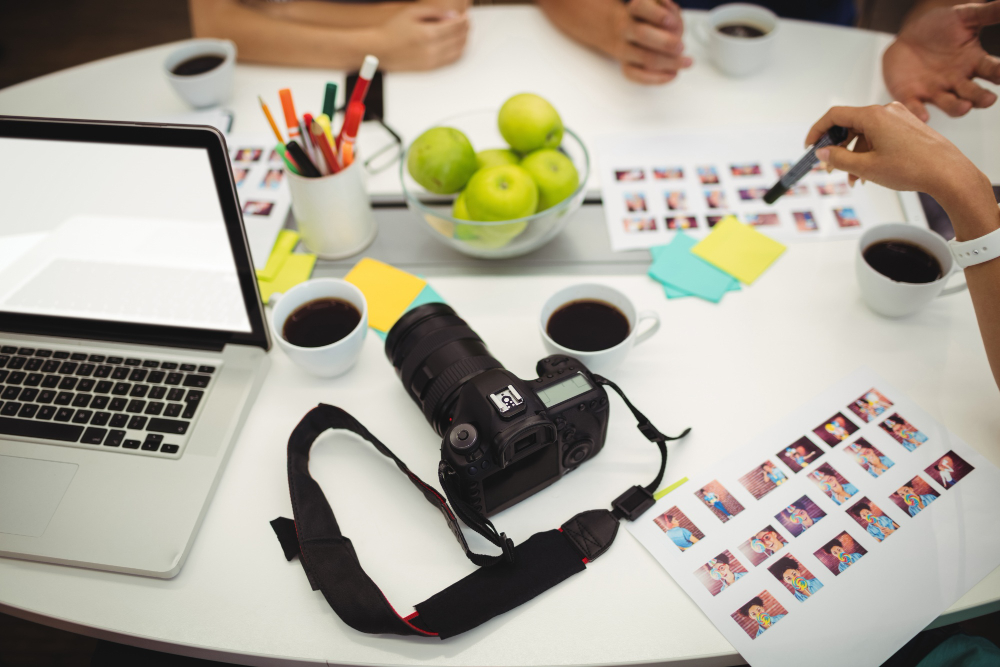Precision Editing: Object Removal from Photo Strategies

Introduction:
In the world of photography, achieving perfection often requires more than just capturing a great shot. It involves meticulous editing to remove distractions, enhance details, and fine-tune the overall composition. Object removal from photo is a critical aspect of this editing process, allowing photographers to clean up their images and create polished final results. In this comprehensive guide, we will delve into various strategies and techniques for precision editing, focusing specifically on object removal from photos. Whether you’re a professional photographer or an amateur enthusiast, mastering these strategies will empower you to elevate the quality of your images, image generator and unlock new creative possibilities.
Understanding Object Removal from Photos:
Before diving into the strategies for object removal, it’s essential to understand the significance of this process. Unwanted objects in a photo can detract from the overall composition, disrupt the visual flow, and diminish the impact of the image. Whether it’s a stray object in the background, a blemish on a subject’s face, or an element that distracts from the main focus, removing these distractions is crucial for creating visually compelling and polished images.
Manual Object Removal Techniques:
Manual object removal techniques involve using basic editing tools to carefully retouch and remove unwanted objects from photos. These techniques offer precise control over the editing process but may require more time and effort compared to automated tools.
Clone Stamp Tool:
The Clone Stamp Tool is a versatile tool found in most photo editing software. It allows users to sample pixels from one part of the image and paint over unwanted objects, effectively replacing them with nearby pixels from the surrounding area. This tool is ideal for removing small, discrete objects or imperfections from a photo.
Healing Brush Tool:
Similar to the Clone Stamp Tool, the Healing Brush Tool analyzes the surrounding pixels and intelligently blends them to remove blemishes or unwanted objects while preserving the texture and color of the area. This tool is particularly useful for retouching portraits and removing larger imperfections from the image.
Automated Object Removal Tools:
Automated object removal tools leverage advanced algorithms to automatically identify and remove unwanted objects from photos with remarkable accuracy and efficiency. These tools can significantly speed up the editing process and produce seamless results with minimal manual intervention.
Content-Aware Fill:
Content-Aware Fill is a feature available in many photo editing software that analyzes the content of an image and fills in selected areas with realistic details that match the surrounding background. This tool is ideal for removing larger objects or distractions from a photo while maintaining the integrity of the scene.
AI-Powered Object Removal:
AI-powered object removal tools take automation to the next level by leveraging artificial intelligence to identify and remove unwanted objects from photos with incredible precision. These tools can analyze the content of an image and intelligently fill in the removed areas, producing flawless results in a fraction of the time compared to manual editing.
Advanced Strategies for Precision Editing:
In the realm of photography, precision editing requires a combination of advanced techniques, attention to detail, and creative problem-solving. Let’s explore some advanced strategies that photographers can employ to achieve immaculate results in object removal and overall precision editing.
1. Frequency Separation:
Frequency separation is an advanced retouching technique that separates the texture and color information of an image into different layers. By working on these layers independently, photographers can make targeted adjustments to specific areas of the image without affecting the overall texture or color. This technique is particularly useful for retouching portraits and removing imperfections while preserving skin texture and natural-looking details.
2. Content-Aware Scaling:
Content-Aware Scaling is a feature available in some photo editing software that allows photographers to selectively resize and reshape objects in an image while preserving the surrounding content. This technique is useful for adjusting the proportions of objects or subjects in a photo without distorting or stretching the surrounding background. By using Content-Aware Scaling, photographers can achieve more natural-looking edits and maintain the integrity of the scene.
3. Perspective Warp:
Perspective Warp is a powerful tool that allows photographers to adjust the perspective of objects in an image, such as straightening lines or correcting distortion caused by perspective issues. This tool is particularly useful for architectural photography, where maintaining straight lines and accurate perspective is essential. By using Perspective Warp, photographers can correct perspective distortions and ensure that their images are visually balanced and aesthetically pleasing.
4. Object-Aware Cropping:
Object-aware cropping is a feature available in some photo editing software that automatically suggests crop boundaries based on the content of the image. This feature analyzes the composition of the photo and identifies key elements, such as subjects or objects, to ensure that they remain within the frame after cropping. Object-aware cropping is useful for refining the composition of an image and removing distracting elements from the edges of the frame while preserving the main subject.
5. Custom Brushes and Patterns:
Custom brushes and patterns allow photographers to create unique effects and textures in their images. By using custom brushes, photographers can add intricate details, textures, or patterns to specific areas of the image, enhancing its visual appeal and adding depth. Custom brushes and patterns are versatile tools that can be used for a wide range of creative purposes, from adding subtle textures to retouching portraits or creating artistic effects.
6. Depth Masking:
Depth masking is a technique that involves using depth information from the image to create precise selections and masks. By analyzing the depth of different elements in the scene, photographers can create depth-based masks that isolate specific areas of the image for editing. This technique is particularly useful for composite images or scenes with varying depths of field, allowing photographers to apply adjustments selectively to different parts of the image based on their distance from the camera.
7. Fine-Tuning with Adjustment Layers:
Adjustment layers are non-destructive editing tools that allow photographers to apply adjustments, such as brightness, contrast, color balance, or saturation, to specific areas of an image. By using adjustment layers, photographers can fine-tune their edits and make subtle adjustments to achieve the desired look without altering the original image data. Adjustment layers offer flexibility and control over the editing process, allowing photographers to experiment with different effects and refine their edits with precision.
8. Selection Refinement:
When selecting objects for removal, it’s essential to refine the selection to ensure accurate and seamless edits. Use selection tools such as the lasso tool or the pen tool to outline the object precisely, then refine the selection edges to blend seamlessly with the surrounding background.
9. Layer Masking:
Layer masking allows photographers to apply edits selectively to specific areas of the image while preserving the rest of the scene. By using layer masks, photographers can create non-destructive edits and make adjustments as needed without altering the original image data.
10. Texture Matching:
When removing objects from photos, pay attention to texture and lighting to ensure that the edited areas blend seamlessly with the surrounding background. Use tools such as the clone stamp tool or the healing brush tool to match textures and colors for a natural-looking result.
Conclusion:
Precision editing is an essential skill for photographers looking to create polished and professional-looking images. By mastering the strategies and techniques outlined in this guide, photographers can effectively remove unwanted objects from photos, enhance details, and fine-tune the overall composition to achieve visually compelling results. Whether you prefer manual editing techniques or automated tools, the key is to approach each edit with precision, attention to detail, and a keen eye for composition. With practice and patience, you can elevate the quality of your images and unlock new creative possibilities through precision editing.






